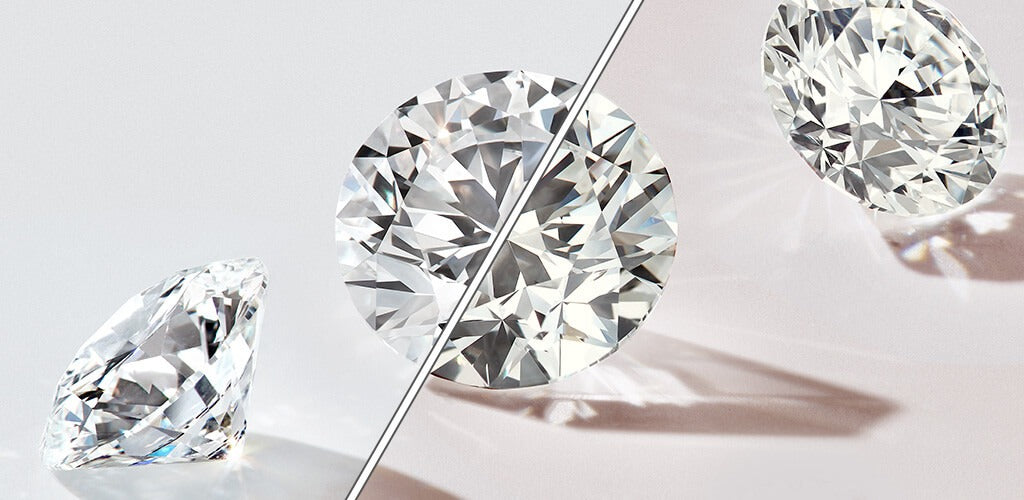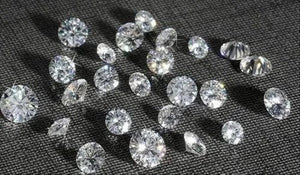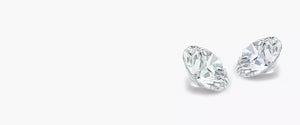If you have been searching for a beautiful stone that is not costly, you might have heard of moissanite - a stone that shines like a diamond but isn't one.
So, why is the price of moissanite stones so low when compared to diamonds? Is it due to the quality of the stone, its scarcity, or something else? We'll answer these questions today with the help of this article.
Despite the low price of moissanite, it is beautiful, tough, and eco-friendly. That is why it is popular among economically-minded people and fans of jewelry.
Let us explore what makes moissanite so beautiful and affordable and find out the real reasons for its low cost.
Moissanite: Its Past, Present, and Future

The chemical composition of the mineral was first studied in 1893 by a chemist who received the Nobel Prize in 1906, Dr. Henri Moissan. He located microscopic mineral crystals in a meteorite crater found in Arizona, USA.
It is worth noting that natural moissanite can hardly be found, which, in the beginning, restricted its use as an ornamental stone.
The mass production came after scientists synthesized the material in the lab. Currently, all types of moissanite are created in labs, significantly affecting their pricing.
As opposed to diamonds, moissanite does not require the expensive and energy-demanding processes of mining and accessing the resource, hence leading to much lower prices for customers.
As awareness increases, the demand for moissanite will tend to grow in the next 10 years.
Reasonable Production Technology
The lab-grown moissanite is produced in an efficient, well-controlled, and replicable manner.
Moissanite consists of silicon carbide, which is a readily available material and is manufactured in bulk.
At varying temperatures and pressures or by adding additional chemicals, it is possible to produce high-quality moissanite crystals, unlike in the case of mining, which has many external factors.
Even though the production of lab-grown diamonds has already reduced the market demand for mined diamonds, producing moissanite is a more accessible and cheaper process.
This is because moissanite does not seek to replicate diamonds; its manufacturing does not require the sophisticated process followed by lab-grown diamonds. Thus, it is produced at a much lower cost.
The manufacturing process's structure helps ensure that moissanite is still cheap but of high quality.
Brands and Marketing Expenditures are Rare

Marketing is crucial in the diamond business, which explains the high cost of every piece produced.
For several years, De Beers has been able to create a strong perception of diamonds with a successful marketing campaign, thus bringing the brand linear growth in diamond sales.
However, no brand exclusively markets moissanite and hypes up its prices.
While it is true that diamonds are meant to be worn for that glamorous effect, the same cannot be said for moissanite, which is traditionally more affordable.
This limited marketing exposure does imply that companies have to sell moissanite at lower prices, thanks to cheaper advertising.
Difference in Supply and Demand
Luxury items such as diamonds are in strong demand all over the globe, and that is why their prices are kept high, as their supply is limited.
In comparison, many of those who purchase moissanite do not seek them as a form of ultra-luxury item; hence, demand for it is still somewhat limited. This pattern of demand allows for maintaining more affordable prices of moissanite.
Also, moissanite does not exist in a controlled market like diamonds. For many years, companies that dealt with mass production of diamonds sold only a small fraction of them to the market at a time.
Such threshold scarcity is not true for producing moissanite, which is available and can be manufactured relatively inexpensively and quickly in bulk.
The outcome is a balanced market devoid of excessive prices, sustaining moissanite's affordability.
Variations in Culture and its Impact on Status

The perception of moissanite as a gemstone with certain attributes similar to diamond has created a price-conscious consumer stereotype.
Based on the diamond industry's branding of diamonds as objects of desire, status and endurance, its value and aura increases itself. Theoretically, a diamond is a status symbol, while moissanite is a diamond imitation that lacks the luxury attached to it.
In light of this cultural understanding, it is no surprise that moissanite is often favored by people who want a gemstone without its associated status. It is a pretty stone, appreciated for its aesthetic purposes but primarily unpretentious.
Due to its practical nature, moissanite is able to offer itself at a reasonable price; hence, it has prospects to attract clients who want to save money.
Environmental and Sustainability Perspectives
The ethical and environmental benefits of moissanite also contribute to its affordability. Diamond mining has been tainted with many moral questions, such as oppression, war, and environmental destruction. Those who are against the diamond buying process and its effects look for moissanite.
Lab Grown Moissanite consumption/creation has a negligible impact on the environment. This is attractive to the cost-conscious and eco-friendly consumer.
There is no mining involved, and the ethical issues are significantly less; hence, the companies do not have to charge premium prices, but they can compete in the market.
For environmentally concerned individuals, moissanite comes as a pure and cheap solution that enhances beauty without feeling guilty.
Increasing Popularity of Moissanite
With the increase in the awareness of the market, the understanding and acceptance of moissanite have risen, causing changes in the historical views set towards luxury and worth.
The low cost of moissanite, accompanied by its beauty and social responsibility, has altered the jewelry market in which a larger population is willing to try other stones apart from diamonds, especially moissanite engagement rings.
With brands and retailers extending their moissanite collections, the stone is also becoming more accessible, and it even declares its place as a high-quality and affordable gemstone.
The production runs are also getting bigger, lowering the cost per unit of moissanite made, which can help stabilize the prices since the demand for moissanite is increasing.
Related Content:
- Does Moissanite Pass Diamond Tester?
- Moissanite Hardness: Absolute Rating on Mohs Scale Explained
- What is VVS Moissanite?
- How to Verify if a GRA Moissanite Report is Fake or Not?
Conclusion
Moissanite is the answer for consumers seeking beauty, practicality, and affordability, as enjoying a beautiful stone without spending on highly priced diamonds is possible.
In the changing landscape of the jewelry market, given the quality that moissanite offers, it stands well for affordable, elegant wear without being excessively expensive.
Its gentle rise in the consumer market is also due to the young generation who want to indulge in jewelry within their means, making moissanite more and more suitable for very diverse kinds of jewelry consumers.






